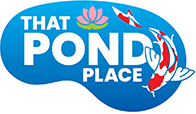
Bogs, the image of a bog can sometimes conjure up somewhat swampy unpleasant scenes, think “Creature From The Black Lagoon”. Bog has never been a particularly nice word and in our language it can be used to describe sticky hard to get out of, undesirable situations. “Hi honey, I can’t get home for dinner, I really bogged down with work”.
But what is a bog really? A place that is hard to move around in or get out of? Well, ok, yes, I’ll give you that one; however bogs are nature’s water filters purifying life giving and sustaining water. Bogs are areas of thick dense aquatic plant growth, nature’s filters. Contaminated water can flow into a bog and emerge clean and pure to sustain our planet.
To put a nice spin on a bog we can also call them wetlands. Wetlands is a pretty word for swamp, for bog, and people bend over backwards to protect our wetlands, as they should be, but at the end of the day the word bog can be substituted for those areas, but it just ain’t perty.
So, how does my rambling relate to ponds? This is the Love your Pond blog after all isn’t it? Sure it is, and here is the connection; bogs, can be used to filter ponds. A small scale bog can be constructed for a pond as a form of filtration and they are incredibly effective! Bog filters for ponds are not a new idea, but they are not a popular idea yet either with the general public; but among professional pond builders bog filtration is coming into its own because of the undeniable powerhouse of a filter they can be. Bog filters are constructed for ponds and planted heavily with aquatic and emergent plants. The pond water is delivered to the bottom of the bog filter and percolates UP through the gravel and plant roots then returns to the pond, typically by way of a waterfall. This method is extremely effective at filtering pond water to amazing clarity while processing and removing nutrients at very high levels, returning to the pond beautifully clear and naturally purified water. This is also a great way to feed your aquatic plants by literally delivering nutrient rich water directly to their root systems. Plant growth in bog filter can be up to 400% faster than plants grown directly in the pond (but, still use plants in your pond too) which will consume nutrients by the “teabag” method. Bog filters are easy to maintain as well, typically needing service 2-3X annually, other than plant pruning.
Ponds that utilize bog filtration also do not have green water issues and algae growth is greatly reduced or eliminated. When it comes time to install, renovate, or upgrade your pond; talk to your pond expert about installing a bog filter system for your pond. You will be happy with the results!
